A quest to see the elusive blue poppies of Bhutan
Simply sign up to the Life & Arts myFT Digest -- delivered directly to your inbox.
Exhausted and wet through, with legs like lead, we push along a narrow, vertiginous trail high above a forest of pine and rhododendron. Grazing on grass sprouting in the summer rain are a herd of yak, each the size of a van, with an emperor’s fly-whisk of a tail at one end and perfectly set horns at the other.
John Reed, our captain, our Ahab, is ahead of me; Jumo, his Tibetan mastiff, by his side. Reed is obsessively hunting for a Himalayan blue poppy — not quite as fearsome as Ahab’s leg-chomping white whale, you might think — but as Reed scans the slopes, as he has been doing for two days, a yak swivels above and behind him, and with a surprisingly dainty flick of her back, begins to charge down the precipitous slope.
A shout goes up along the line and Reed turns, Jumo tucking in behind. Half a tonne of lean beef accelerates, and then comes up short, digging in, man and beast facing each other down. Guides run in and the yak frolics off with little rodeo kicks, and we are walking again through the high thin air, our search continuing.
I have to admit this wasn’t what I was expecting. I had been asked to join Aman resorts, the epitome of luxury, on a “summer poppy trek” in Bhutan, and visions of being carried through high passes like a well-massaged Kublai Khan flitted through my head. “Bhutan? Isn’t that famous for a death march?” a friend had asked. I’d replied “No, that’s Bataan. Bhutan is renowned for its happiness.” Little did I know.
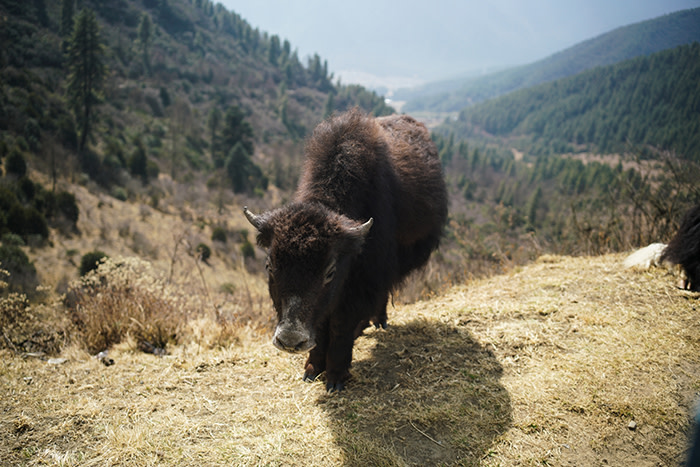
All seemed well at first. An easy flight into Delhi and then Drukair up into the high peaks before descending through a series of wingtip-to-mountain turns into this last independent kingdom of the Himalayas. I was met by my guide, devout Buddhist Kesang Dawa, and taken to Aman’s lodge in the capital Thimphu, to be greeted with a lemongrass-scented wet flannel and a glass of hot apple juice.
Since 2004 Aman, which now has 33 hotels in 21 countries, has offered a Bhutanese “kora”, a pilgrimage around five lodges scattered among the most beautiful valleys of this nation squeezed between India and Tibet. Only open to visitors since 1974, Bhutan maintains its otherworldliness by discouraging mass tourism; every guest must spend a minimum of $250 a day (although this is waived for Indians).
Kesang and driver Phuntso Pauatsho took me on part of the pilgrimage to get me used to the altitude. This involved skilfully driving me up and down vomitous roads and stopping at stalls to eat freshly chopped cucumber sprinkled with chilli.
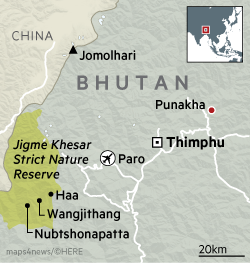
I reeled under the visual assault, climbing to highly perched temples — including the famed Tiger’s Nest — on hillsides awash with prayer flags flickering under an unruly sky. And when we arrived at a new lodge — Punakha, hidden across a narrow suspension bridge, where cheeky mynah birds nicked my breakfast; or Paro, under the eaves of an ancient Buddhist dzong (or fortress) — I would be told “welcome home”, and met with a drink I had shown a random preference for in a previous lodge. “Ah, more masala chai, thank you,” I’d say.
There is something religious, even sepulchral, about Aman’s monolithic buildings, with their towering concrete walls, slit windows, echoing halls, simple wooden furniture set on floors of polished champ. And the silent figures who waited, ready to serve, whenever I turned my head. It wasn’t just the altitude I was getting used to.
On the fifth morning, we parked just outside Haa, a frontier town in the far west of this already wild country. Around us was the clutter of camping: tents, gas canisters, collapsible tables. Horses and mules fretted as they were loaded. We were 13 people, and 15 beasts of burden.
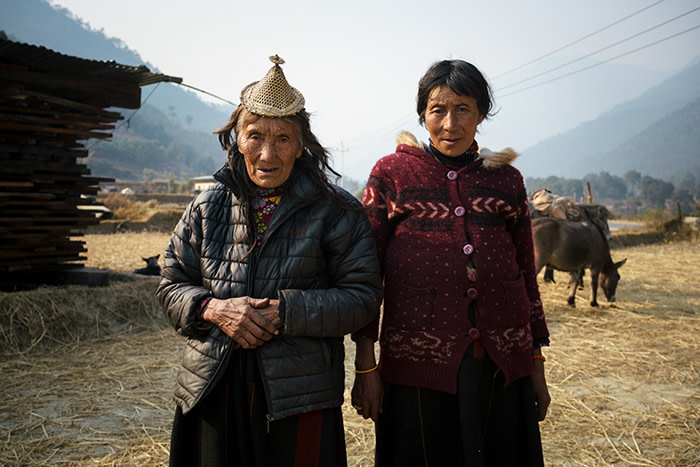
The blue poppy — Bhutan’s national flower and inspiration for our trek — grows above 3,700 metres and only blooms during June and July’s monsoon season, a time when all the guide books warn of incessant rain (and swarms of leeches — but fortunately we were too high for those). Aware the weather could be an issue, we visited a local temple and offered up prayers and cash to the local deity, Chungdue.
Then we started to climb, the forest crowding around us, sun-dappled branches dripping wispy lichens. As we walked, Kesang told me about the monarchy in this nation of 800,000, that the fourth king introduced democracy in 2007, and abdicated in favour of his son. “His Majesty said we can’t always count on there being a just king and we should choose our own leaders,” he said.
The former king was also responsible for the celebrated policy that the country should prioritise “Gross National Happiness” over GDP. It’s really just a benchmark of environmental responsibility and good governance, but he lives it, spending a lot of time mountain biking in his gho, Bhutan’s national dress, a sort of dressing gown/skirt that reminds me of my native kilt.
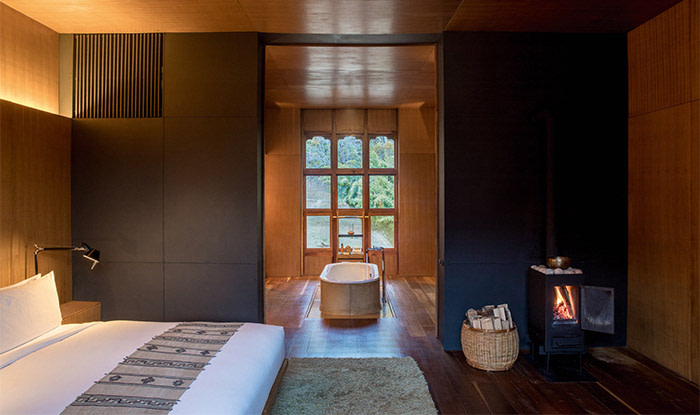
By the time we emerged from the tree-line, I was gasping. Altitude sickness can be like a hook pulled into the base of the skull. As I fought to recover, weather swirled through the high mountain passes, rain storms building and then releasing. The guide books are wrong: in July the sun belts down in the morning, burning any exposed skin, before clouds build in the afternoon.
Come evening, we nestled under a 3,900-metre mountain pass at a place called Tshojo. On the hillside above was the blue tarpaulin of a yak-herder’s camp, his charges ranged across the high ground. Rain was falling heavily now and after the comforts of Aman, it became clear this really was camping, with clammy tents, a gag-inducing outdoor loo, and the spooky night beyond.
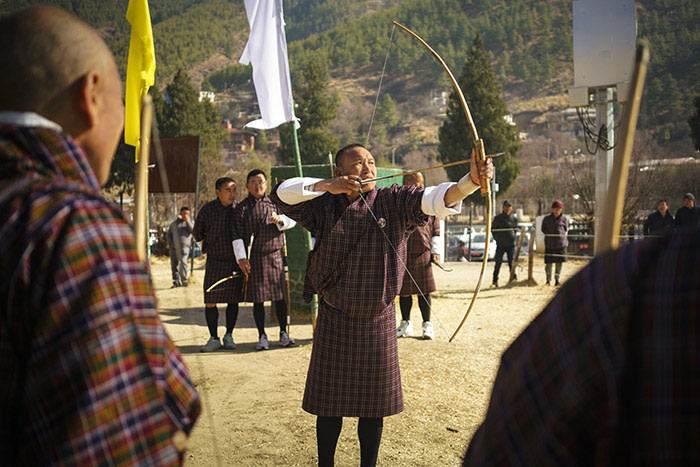
I’m ashamed to say I didn’t take it very well. After a meal of chilli chicken, red rice and something called bitter gourd, the guides settled in with Reed to play cards. I left them to it. I lay in my sleeping bag, the gamblers’ laughter keeping me awake, rain drumming on the canvas, the horses’ bells ringing beside my head.
Dawn arrived and I dragged myself from the tent. The sky had cleared, and in every direction mountainsides burned with a dark clarity. The meadows around about were swept with high alpine flowers.
Come breakfast of fried rice, eggs and butter tea, I asked Reed if any of his guests had ever managed to complete this trek. With his architect’s glasses and designer stubble, the 54-year-old New Orleans native projects a top hotelier’s refined equanimity, but I was discovering it covers a deep yearning for the wild. He pursed his lips, thought, and shook his head, saying one group actually ordered in a helicopter at $5,000 an hour to get them off the mountain.
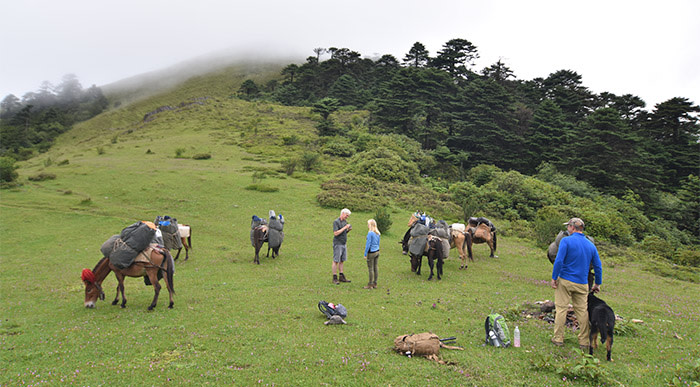
We moved off up the slope, chewing candied ginger to keep the dizziness at bay, and were met at the pass by a sea of buttercups, ragwort and fleece-flower. A vast valley opened up, and down we plunged. There was no sign of humanity anywhere — in four days we saw no one except yak-herders. Reed searched the crevices for blue poppies, offering up a bounty for finding one. I wasn’t that fussed, already delighted by the delphinium, delicate and exquisite, and the overwhelming scent of juniper.
After crossing a stream we arrived at Wangjithang, a glade where wild pheasant clucked, and pika, small hamster-like creatures, rustled about in the undergrowth. Jumo, slowed by the ravages of altitude, occasionally lumbered into chase, but so slowly the creature had already long gone.
Sadly we had to leave that Eden. It was only 11am. Twenty kilometres later, seesawing between 3,000 and 4,300 metres and crossing four high passes, it was all we could do to reach camp, silently eat what our altitude-suppressed appetites would allow and fall soaked into our tents. And still no blue poppies: a Chelsea Flower Show extravaganza of other flowers, but no national bloom.
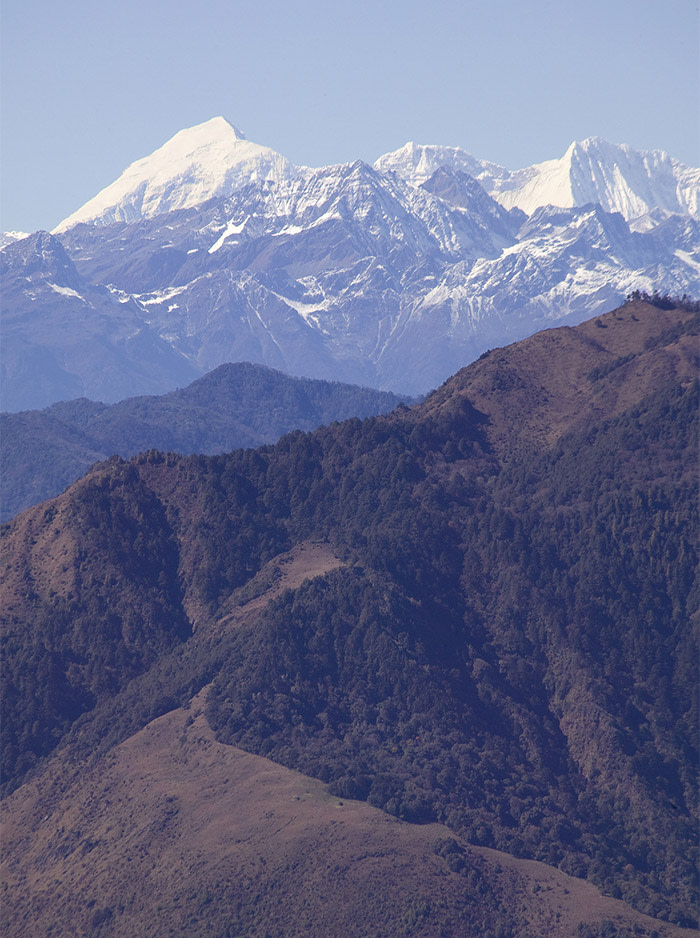
My God though, the dawn. Jhomolhari, a 7,326-metre colossus, rose angel-white from the horizon, while sinuous fingers of cloud reached through the lower passes. I stood with Ellie Boulstridge, Aman’s new reservations manager, while Kesang pointed out a Chinese road cut into a distant mountainside. The Chinese are encroaching on this tiny country, and India has sent troops to warn them off. When not suffused with happiness, the Bhutanese are rightly anxious about being entirely surrounded by these two great powers.
A lake lay below our camp, a sacred place called Nubtshonapatta, and we climbed down. The guides poured in milk as an offering, which spread as if through tea. Kesang talked me through the legend of the place. Apparently a guru inhaled all the water of this lake so he could make off with a golden tower hidden in its depths, but then he was chased away by an angry mermaid, and coughed up lakes all the way home.
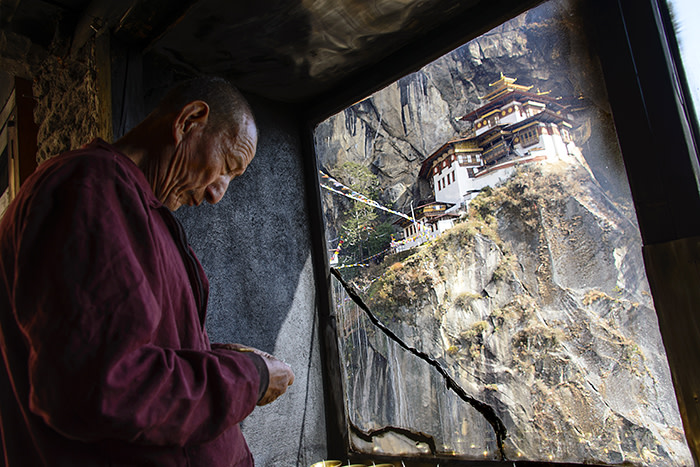
After breakfast, we started climbing again, topping out at 4,600 metres. As I caught my breath I discovered I was in a land of the gods. Around us grew rheum nobile, what the Bhutanese call “chuka”, a plant that creates its own leafy greenhouse, three-foot-tall, to counteract the cold and exposure of its mountain environment. And then we spotted a large herd of blue sheep, prey of the most fabled of all big cats, the snow leopard.
My legs were finally working, and although the rain came in, I was now entranced by the fearful beauty of the place. We traversed scree slopes, lunched under dripping canvas, and visited lakes where few people have ever set foot. And then, out of the mist, at the top of a sheer cliff, a yak-herder’s camp emerged.
Inside, two herders sat under a wheel of yak’s-milk cheese curing in the thick smoke. They invited us in, and Reed asked about the poppies. “The season ended two days ago,” came the reply.
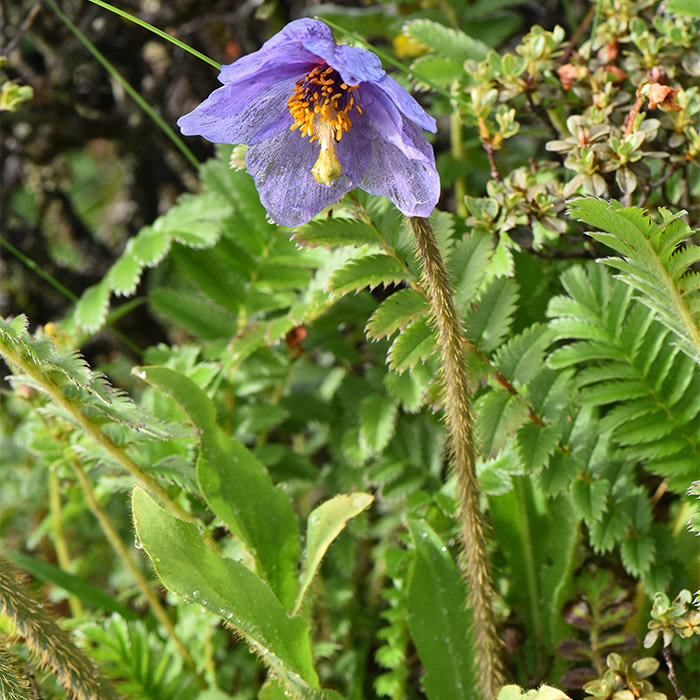
Our captain was downcast. Shortly afterwards he was charged by the yak. We topped a misty pass and were disconsolately heading down to our camp when there was a shout. Phuntso had found a last holdout. At the end of that day’s 26km, a single spiny stem was hidden among low-lying rhododendron, its pale blue petals a mass of raindrops.
We laughed a lot that night, buoyed by our stories, the cards and cheap Bhutanese whisky. Our captain looked happy.
A day later and I was lying in the huge bath in my room at Aman’s Paro lodge. My soaking clothes — even my boots — had been taken off to be cleaned. The mountains rose beyond the windows, clouds forming and reforming around their peaks, and, gazing out at them, I felt all at once bereft, yearning to be back in the wilderness. Then I reached down for the cup of masala chai waiting by my side, and settled back.
Details
Ruaridh Nicoll was a guest of Abercrombie & Kent and Aman. Abercrombie & Kent offers a week’s “blue poppy package” including four nights at Aman’s lodges and three nights on the trek, from £6,250 including British Airways and Drukair flights from London, transfers and guiding.
More high-end Himalayas
Ladakh In remote villages in India’s arid far north, Shakti has converted traditional houses into stylish retreats. There are six in all — guests move between them by 4x4 or on foot, as well as heading out on trekking expeditions with tents, porters and guides. A nine-night trip, including three under canvas while trekking, costs from $9,195; shaktihimalaya.com
Everest The world’s most famous trek — to Everest base camp — can now be done in relative style, thanks to the emergence of a series of more comfortable lodges along the route. A distinct step up from the traditional tea house, they have well-tended gardens, proper restaurants and en-suite bathrooms with hot showers. The Mountain Company offers a 19-day trip from £2,795 per person; themountaincompany.co.uk
Follow @FTLifeArts on Twitter to find out about our latest stories first. Subscribe to FT Life on YouTube for the latest FT Weekend videos
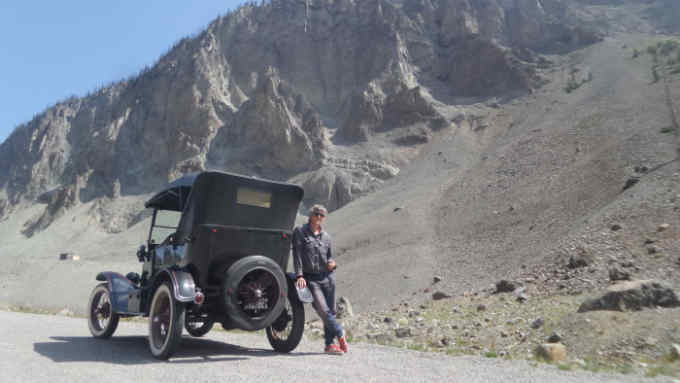
Comments